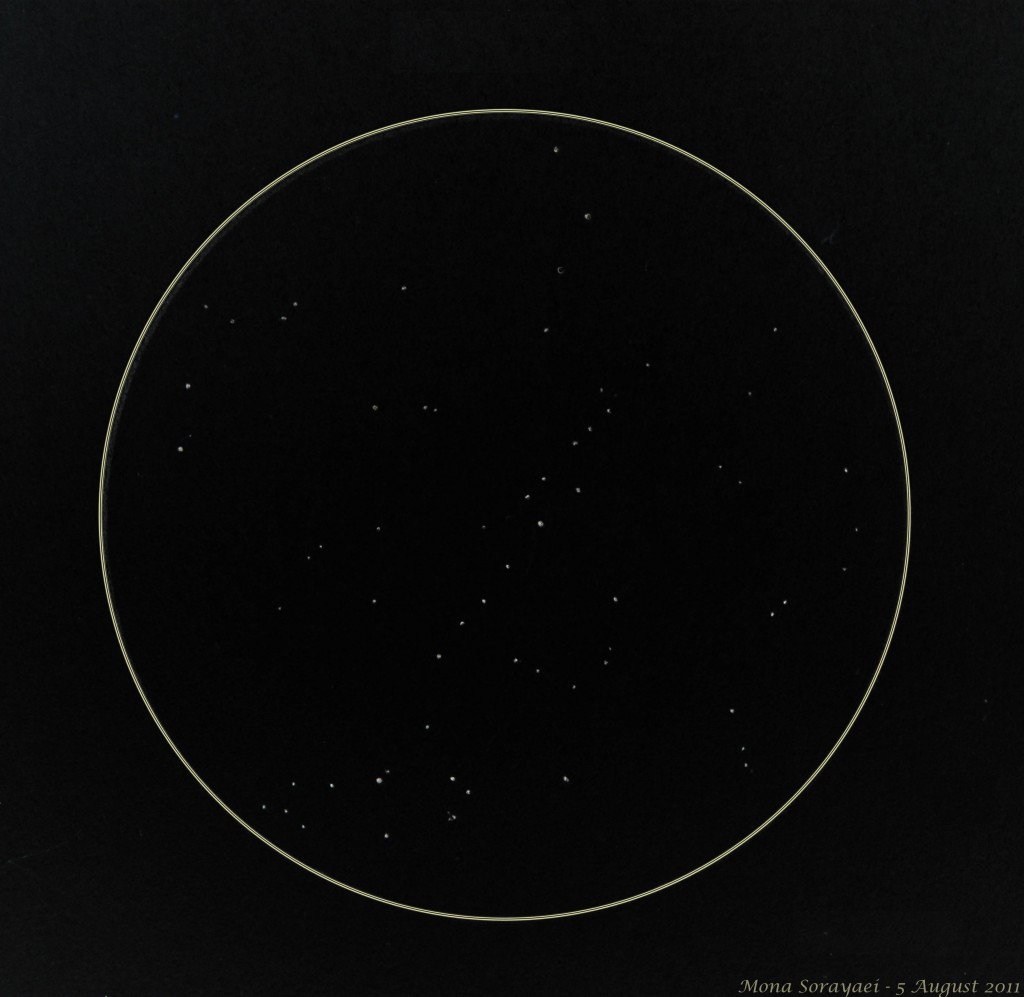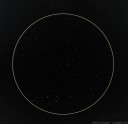
Object Type: Asterism
Location:Seyedabad-Firoozkooh,Iran (35º 38′ N , 52º 22′ E)
Date: August 5, 2011
Time: 2:00 Local Time (+3:30 GMT)
Media: Graphite pencil on white paper,Inverted in Photoshop
Optic: 80 ED APO Refractor Telescope
Focal Length: 600 mm
Eyepiece: 42mm Wide view five elements
Best Regards and Clear Sky
Mona Sorayaei
Kemble’s Cascade, located in the constellation Camelopardalis, is an asterism — a pattern created by unrelated stars. It is an apparent straight line of more than 20 colorful 5th to 10th magnitude stars over a distance of approximately five moon diameters, and the open cluster NGC 1502 can be found at one end.
It was named by Walter Scott Houston in honor of Father Lucian J. Kemble (1922–1999), a Franciscan Friar and amateur astronomer who wrote a letter to Houston about the asterism, describing it as “a beautiful cascade of faint stars tumbling from the northwest down to the open cluster NGC 1502” that he had discovered while sweeping the sky with a pair of 7×35 binoculars.
Houston was so impressed that he wrote an article on the asterism that appeared in his “Deep Sky Wonders” column in the astronomy magazine Sky & Telescope in 1980, in which he named it “Kemble’s Cascade”.

Mona
Nicely done.
Mona, A very nice sketch.
Frank 🙂